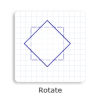You are using an out of date browser. It may not display this or other websites correctly.
You should upgrade or use an alternative browser.
You should upgrade or use an alternative browser.
Would love a definitive answer to whether small images as 72 DPI will print fine in PDF format?
- Thread starter shazza
- Start date
While stictly 300 is a good guess at the ppi required it actually depends a lot on the image subject, printing method and a few other variables.
Typically 300 ppi is a good rule of thumb.
If it's a grayscale image you can probably go about 1/3 of that.
A foggy image you could probably go about half that
Anything with little definitition is about half that too.
For printing on litho machines plates are made with lines per inch (LPI) and these LPI are key key to printing resolution.
Newspapers are pourous and have a typical LPI of 80-100
Magazines or low quality magazines have a typical lpi of 100-150
Magazines mid-high end have a LPI of about 150-175
And High End coffee table/art type books typically have a LPI of 175-200
The rule of thumb most people go through is that that the LPI must be x2 to get the optimal PPI for printing (or DPI in print)
This is where the 300PPI rule of thumb comes from, as most printers set their LPI to approx 150 for most jobs and 150 x 2 = 300.
But that's a bit of misnomer in terms of the figure - as the x2 rule is erroneous.
The actual figure you should multiply by is 1.41 (recipricol)
This is due to the halftone dots in questions, which are printed in a square shape.
During the process the halftone square needs to be rotated 45 degress to avoid Screen Clashes called Moire (http://the-print-guide.blogspot.com/2009/12/moire.html)
It's 45 degrees because technically that's all a computer algorithim can do - it can faux rotate at 15/30/45/60/90 etc. but in technical computer terms 45 degrees is the only true rotation for very techincal reasons.
When you rotate a square 45 degrees it's now exactly 1.411111 times the size it was from horizontal cross
Say when the square is square shape and it's 1 across the top, and 1 down the side.

When it's rotated 45 degrees it's now 1.41 from tip to tip.
And that's why you multiply the LPI of the print by 1.41 to get the true DPI (PPI) for placing your images.
Typically 300 ppi is a good rule of thumb.
If it's a grayscale image you can probably go about 1/3 of that.
A foggy image you could probably go about half that
Anything with little definitition is about half that too.
For printing on litho machines plates are made with lines per inch (LPI) and these LPI are key key to printing resolution.
Newspapers are pourous and have a typical LPI of 80-100
Magazines or low quality magazines have a typical lpi of 100-150
Magazines mid-high end have a LPI of about 150-175
And High End coffee table/art type books typically have a LPI of 175-200
The rule of thumb most people go through is that that the LPI must be x2 to get the optimal PPI for printing (or DPI in print)
This is where the 300PPI rule of thumb comes from, as most printers set their LPI to approx 150 for most jobs and 150 x 2 = 300.
But that's a bit of misnomer in terms of the figure - as the x2 rule is erroneous.
The actual figure you should multiply by is 1.41 (recipricol)
This is due to the halftone dots in questions, which are printed in a square shape.
During the process the halftone square needs to be rotated 45 degress to avoid Screen Clashes called Moire (http://the-print-guide.blogspot.com/2009/12/moire.html)
It's 45 degrees because technically that's all a computer algorithim can do - it can faux rotate at 15/30/45/60/90 etc. but in technical computer terms 45 degrees is the only true rotation for very techincal reasons.
When you rotate a square 45 degrees it's now exactly 1.411111 times the size it was from horizontal cross
Say when the square is square shape and it's 1 across the top, and 1 down the side.

When it's rotated 45 degrees it's now 1.41 from tip to tip.
And that's why you multiply the LPI of the print by 1.41 to get the true DPI (PPI) for placing your images.
Digital printing is completely process, it doesn't use plating technology, halftones or other methods, it uses toner (powder) and electrically charges the paper in the places the powder sticks to.
In essence, it's a lot more forgiving than lithographic printing and you could go as low as 150-200 - but you would have to check that with your print provider.
In essence, it's a lot more forgiving than lithographic printing and you could go as low as 150-200 - but you would have to check that with your print provider.